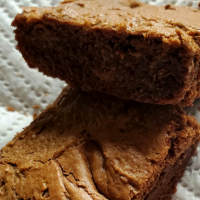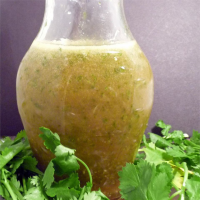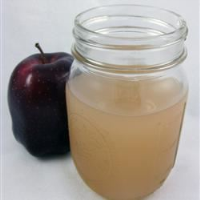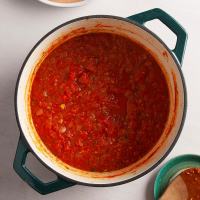HOW TO REDUCE THE ACIDITY IN TOMATOES | JUST A PINCH RECIPES
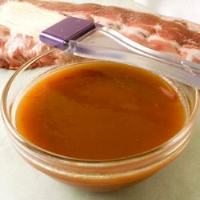
This is part two of working with canned tomatoes. Our quest is to reduce the bitter, acidic taste associated with most brands of canned tomatoes. So, you ready… Let’s get into the kitchen.
Provided by Andy Anderson ! @ThePretentiousChef
Categories Other Sauces
Prep Time 20 minutes
Number Of Ingredients 1
Steps:
- Chef’s Note: The one thing all canned tomatoes have in common, is what is called the “canned” taste of the tomatoes. In some cheaper cans of tomatoes, the taste is more pronounced; while in other, more expensive labels, it’s much less. Our goal is to reduce that “bitter” taste, and wind up with a great-tasting tomato that we can then use in virtually any tomato-based dish.
- FIRST THINGS FIRST
- You will need the right can of tomatoes, so if you want some help with that, go to this recipe post I put together on the best-canned tomatoes: https://www.justapinch.com/recipes/soup/soup-other-soup/cooking-class-the-best-canned-tomatoes.html Understand that nothing you do can fix a really bad can of tomatoes… NOTHING. Imagine spending hours working on that special tomato or pizza sauce only to have it ruined by a bad can of tomatoes.
- TASTE TEST
- Let’s get started. Open a can of tomatoes and give it a taste.
- Chef’s Tip: Even cans of tomatoes from the same brand name will have subtle differences from can to can. This can mostly be explained by seasonal differences in the picked tomatoes.
- Good labels like: Strianese, and Nutrilia work hard to limit the difference; however, you simply can’t grow the same tomato, with the same taste, over-and-over again… So, open the can and taste it.
- Chef’s Note: Before I’ll ruin one of my sauces, I’ll throw away a can of tomatoes that taste too bitter or, better yet, I’ll return them to the store. I’ve purchased two cans of tomatoes from the same brand name, brought them home and opened them… One was useable, the other wasn’t. Good chefs will taste as they go.
- Chef’s Note: Yes, it is possible to return a can of open tomatoes, or whatever, to a store. My store knows me so well, that all they expect me to return is the empty can, if it is bad.
- Before buying, pick up the can and give it a shake, if it sounds real watery, it’s probably too bitter. Put it back and shake another one. Shake, Rattle, and Roll. You’ll looking for a can that sounds more viscous, or thick. If you shake a really cheap tomato brand, it will probably feel like you’re shaking a tin of water.
- Chef’s Note: How can you tell if a can feels watery or viscous? How can you tell when you taste the tomatoes if they are too bitter to use? Experience is the teacher here. In my classes, I have good and bad cans, and I let my students shake the cans to get experience on what to expect. The same is true with tasting tomatoes. The more you do it, the better you will get. Go into the store, and find the most expensive can of tomatoes you can and then shake it… Now find the cheapest, junk can of tomatoes you can and then shake that one… Notice any difference?
- DESEEDING THE TOMATOES
- Chef’s Note: This step is only necessary if you are buying whole plum tomatoes, not crushed or diced. However, I do recommend in almost all cases that you buy whole plum and crush them yourself.
- Pour the tomatoes, juices and all, into a non-reactive bowl.
- Remove the stems, from the tomatoes with a small pairing knife, and discard.
- Squeeze the tomatoes to extract the seeds, but do this by squeezing them back into the bowl with the juices.
- If you choose you can even cut the tomatoes open to extract as many of the seeds as possible. Again, return the seeds to the bowl with the tomato juices.
- After extracting the seeds place the tomatoes into a separate bowl.
- Use a medium mesh strainer to separate the seeds out of the tomato juices. You want all the juice (every bit), and the only things left in the strainer will be all those seeds.
- Add the juices to the tomatoes, and discard the seeds.
- Lightly crush the tomatoes, but don’t puree.
- Chef’s Note: I usually use my hands to crush the tomatoes. The best tool a chef has is his/her hands.
- RINSING THE TOMATOES
- That’s right were going to give our tomatoes a quick shower.
- All canned tomatoes will have a certain amount of bitterness. If you’re using some of the more expensive brands, you might not need to do a rinse; however, as I’ve mentioned before, every can of tomatoes is different; even two cans from the same brand name.
- Place the tomatoes in a fine mesh strainer, and allow them to drain, this might take a couple of minutes.
- Chef’s Note: You will need a very fine mesh strainer for this operation to work correctly.
- Chef’s Note: DO NOT push on the tomatoes, just let them drain naturally.
- Once drained, you should have a bowl of clear water (the tomatoes are still in the strainer).
- Chef’s Note: If the water is really red, carefully pour it back on top of the tomatoes, and strain again. Eventually, you should have a bowl of mostly clear water, and every bit of tomato is still in the strainer. Or, you might need a finer mesh strainer.
- Chef’s Tip: If you taste the water, it should be bitter.
- Discard the bitter water, and rinse again with a bit of fresh water.
- Chef’s Tip: Don’t mess with the tomatoes; just let them be, and pour the water over them… around a half a cup.
- Chef’s Note: Now when you taste the second batch of water, it should be less bitter.
- Repeat the straining process until most, but not all of the bitterness, has been removed from the tomatoes. On most canned varieties two to three rinses is all you are going to need. Remember, we don’t want to remove all of the bitterness and acid.
- All your wonderful tomatoes are still in the strainer.
- At this point, you have now removed the bitterness and acid, and what you have is good-tasting tomatoes that you can now use in anything from a pizza sauce to a marinara.
- Chef’s Tip: Here are some other ways to help in reducing the bitterness of canned tomatoes: Sugar (just a touch): For some sauces this will work; however, when I’m making a pizza sauce, I don’t use sugar. I don’t like a sweet pizza sauce. Salt (just a pinch): Adding salt might sound a bit counterintuitive; however, salt working with the acidic tomatoes will reduce their overall bitterness. Dried Oregano (crushed in your hand before adding): The released oils will help to reduce the bitterness.
- Keep the faith, and keep cooking.
HOW TO REDUCE THE ACIDITY IN TOMATOES | JUST A PINCH RECIPES
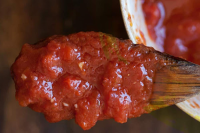
This is part two of working with canned tomatoes. Our quest is to reduce the bitter, acidic taste associated with most brands of canned tomatoes. So, you ready… Let’s get into the kitchen.
Provided by Andy Anderson ! @ThePretentiousChef
Categories Other Sauces
Prep Time 20 minutes
Number Of Ingredients 1
Steps:
- Chef’s Note: The one thing all canned tomatoes have in common, is what is called the “canned” taste of the tomatoes. In some cheaper cans of tomatoes, the taste is more pronounced; while in other, more expensive labels, it’s much less. Our goal is to reduce that “bitter” taste, and wind up with a great-tasting tomato that we can then use in virtually any tomato-based dish.
- FIRST THINGS FIRST
- You will need the right can of tomatoes, so if you want some help with that, go to this recipe post I put together on the best-canned tomatoes: https://www.justapinch.com/recipes/soup/soup-other-soup/cooking-class-the-best-canned-tomatoes.html Understand that nothing you do can fix a really bad can of tomatoes… NOTHING. Imagine spending hours working on that special tomato or pizza sauce only to have it ruined by a bad can of tomatoes.
- TASTE TEST
- Let’s get started. Open a can of tomatoes and give it a taste.
- Chef’s Tip: Even cans of tomatoes from the same brand name will have subtle differences from can to can. This can mostly be explained by seasonal differences in the picked tomatoes.
- Good labels like: Strianese, and Nutrilia work hard to limit the difference; however, you simply can’t grow the same tomato, with the same taste, over-and-over again… So, open the can and taste it.
- Chef’s Note: Before I’ll ruin one of my sauces, I’ll throw away a can of tomatoes that taste too bitter or, better yet, I’ll return them to the store. I’ve purchased two cans of tomatoes from the same brand name, brought them home and opened them… One was useable, the other wasn’t. Good chefs will taste as they go.
- Chef’s Note: Yes, it is possible to return a can of open tomatoes, or whatever, to a store. My store knows me so well, that all they expect me to return is the empty can, if it is bad.
- Before buying, pick up the can and give it a shake, if it sounds real watery, it’s probably too bitter. Put it back and shake another one. Shake, Rattle, and Roll. You’ll looking for a can that sounds more viscous, or thick. If you shake a really cheap tomato brand, it will probably feel like you’re shaking a tin of water.
- Chef’s Note: How can you tell if a can feels watery or viscous? How can you tell when you taste the tomatoes if they are too bitter to use? Experience is the teacher here. In my classes, I have good and bad cans, and I let my students shake the cans to get experience on what to expect. The same is true with tasting tomatoes. The more you do it, the better you will get. Go into the store, and find the most expensive can of tomatoes you can and then shake it… Now find the cheapest, junk can of tomatoes you can and then shake that one… Notice any difference?
- DESEEDING THE TOMATOES
- Chef’s Note: This step is only necessary if you are buying whole plum tomatoes, not crushed or diced. However, I do recommend in almost all cases that you buy whole plum and crush them yourself.
- Pour the tomatoes, juices and all, into a non-reactive bowl.
- Remove the stems, from the tomatoes with a small pairing knife, and discard.
- Squeeze the tomatoes to extract the seeds, but do this by squeezing them back into the bowl with the juices.
- If you choose you can even cut the tomatoes open to extract as many of the seeds as possible. Again, return the seeds to the bowl with the tomato juices.
- After extracting the seeds place the tomatoes into a separate bowl.
- Use a medium mesh strainer to separate the seeds out of the tomato juices. You want all the juice (every bit), and the only things left in the strainer will be all those seeds.
- Add the juices to the tomatoes, and discard the seeds.
- Lightly crush the tomatoes, but don’t puree.
- Chef’s Note: I usually use my hands to crush the tomatoes. The best tool a chef has is his/her hands.
- RINSING THE TOMATOES
- That’s right were going to give our tomatoes a quick shower.
- All canned tomatoes will have a certain amount of bitterness. If you’re using some of the more expensive brands, you might not need to do a rinse; however, as I’ve mentioned before, every can of tomatoes is different; even two cans from the same brand name.
- Place the tomatoes in a fine mesh strainer, and allow them to drain, this might take a couple of minutes.
- Chef’s Note: You will need a very fine mesh strainer for this operation to work correctly.
- Chef’s Note: DO NOT push on the tomatoes, just let them drain naturally.
- Once drained, you should have a bowl of clear water (the tomatoes are still in the strainer).
- Chef’s Note: If the water is really red, carefully pour it back on top of the tomatoes, and strain again. Eventually, you should have a bowl of mostly clear water, and every bit of tomato is still in the strainer. Or, you might need a finer mesh strainer.
- Chef’s Tip: If you taste the water, it should be bitter.
- Discard the bitter water, and rinse again with a bit of fresh water.
- Chef’s Tip: Don’t mess with the tomatoes; just let them be, and pour the water over them… around a half a cup.
- Chef’s Note: Now when you taste the second batch of water, it should be less bitter.
- Repeat the straining process until most, but not all of the bitterness, has been removed from the tomatoes. On most canned varieties two to three rinses is all you are going to need. Remember, we don’t want to remove all of the bitterness and acid.
- All your wonderful tomatoes are still in the strainer.
- At this point, you have now removed the bitterness and acid, and what you have is good-tasting tomatoes that you can now use in anything from a pizza sauce to a marinara.
- Chef’s Tip: Here are some other ways to help in reducing the bitterness of canned tomatoes: Sugar (just a touch): For some sauces this will work; however, when I’m making a pizza sauce, I don’t use sugar. I don’t like a sweet pizza sauce. Salt (just a pinch): Adding salt might sound a bit counterintuitive; however, salt working with the acidic tomatoes will reduce their overall bitterness. Dried Oregano (crushed in your hand before adding): The released oils will help to reduce the bitterness.
- Keep the faith, and keep cooking.
More about "acidity in tomatoes recipes"
CANNED TOMATOES (FOR LOW ACID VARIETIES) RECIPE - FOOD.COM
With the arrival of so many new tomato varieties, Agriculture Canada and their Provincial counterparts have discovered that many store bought and home grown tomatoes have much lower acid content than those grown years ago.
This low acid content creates a potential safety hazard for those of us who love to preserve them. Adding salt alone no longer assures bacteria protection for canned tomatoes.
This adjusted recipe solves the problem and won't affect the taste.
From food.com
Total Time 30 minutes
Calories 33.8 per serving
From food.com
Total Time 30 minutes
Calories 33.8 per serving
- Store in cool dark place.
See details
3 WAYS TO REDUCE ACID IN TOMATO DISHES - WIKIHOW
From wikihow.com
See details
HOW TO REDUCE ACIDITY IN TOMATO SAUCE » RECIPEFAIRY.COM
From recipefairy.com
See details
HOW TO REDUCE ACIDITY IN TOMATO SAUCE? (3 TIPS) - THE ...
Mar 08, 2021 · Other FAQs about Sauces which you may be interested in. Add vegetables. To your tomato sauce, you can also add spinach, carrot, and eggplant. However, be sure not to add pickled or canned vegetables as they ... Add Fatty-Dairy Products. Add Sugar and Salt. Add Herbs and Caramelized Onions. Give it ...
From thewholeportion.com
From thewholeportion.com
See details
HOW TO CUT THE ACID IN TOMATO SAUCE? (9 WAYS) - THE WHOLE ...
From thewholeportion.com
See details
5 OPTIONS FOR LOW-ACID TOMATO SAUCE - BESTRECIPES.CO
From bestrecipes.co
See details
LOW ACID TOMATO SAUCE : GERD / ACID REFLUX SAFE RECIPES ...
From drgourmet.com
See details
RECIPE RESCUE: WHAT TO DO WHEN FOODS ARE TOO ACIDIC? | KITCHN
Nov 08, 2010 · Fall is the season for thick stews, chillis and rich pasta dishes. They all provide intense comfort for many of us, but what happens when your tomatoes or tomatillos scream acidity instead of rich comfort food. Just like you add potatoes to overly salty foods, this is one kitchen fix you’ll have memorized in seconds!
From thekitchn.com
From thekitchn.com
See details
HOW TO CUT ACIDITY IN TOMATO SAUCE
It’s going to increase the flavour and reduce the acidity of your tomato sauce. 2. Baking soda. It’s also possible to use baking soda in your tomato sauce to chop the acidity. Add ¼ teaspoon of baking soda to the sauce and blend it effectively. Depart the sauce to simmer at low warmth for 10-Quarter-hour, and style it.
From takeoutfood.best
From takeoutfood.best
See details
5 OPTIONS FOR LOW-ACID TOMATO SAUCE - BESTRECIPES.CO
There are so many reasons to eat tomatoes, they’re high in water, low in calories, and a good source of nutrients. “One medium sized tomato can provide about 28% of the recommended daily intake” of vitamin C. Tomatoes also contain potassium, vitamin K1, folate, and antioxidants.. Unfortunately, the acidity in tomatoes doesn’t always agree with everyone.
From bestrecipes.co
From bestrecipes.co
See details
CHEF RICHARD’S LOW-ACID TOMATO SAUCE AND FETTUCCINE
Jul 09, 2013 · Tomatoes are very versatile and can add great flavors to some of your favorite recipes. As we get older reducing the acid content in our favorite foods can make the meal a little easier for those of us who have a lowered tolerance for acidic foods. Below are some helpful techniques on how to lower the acidity of a tomato sauce, as well as one of my favorite simple, low-acid pasta dishes. Avoid ...
From baptisthealth.net
From baptisthealth.net
See details
USING BAKING SODA TO TONE DOWN TOMATO SAUCE | COOK'S ...
Adding baking soda will change the pH of tomato sauce, making it less acidic. Generally, we balance tomato sauce acidity by adding a bit of sugar. While sugar can’t neutralize acidity in the same way that baking soda can, it does change our perception of other tastes. We made a giant batch of our Quick Tomato Sauce recipe, divided it into 3 ...
From cooksillustrated.com
From cooksillustrated.com
See details
30+ TOMATO CANNING RECIPES TO PRESERVE THE HARVEST
Jul 02, 2021 · Tomatoes, though they seem “acidic” have a pH that’s right around 4.6, which means they’re too close to the danger zone to water bath can without added acidity (and a tested recipe). Some are slightly above, some slightly below a safe water bath canning pH of 4.6.
From practicalselfreliance.com
From practicalselfreliance.com
See details
EASY TOMATO SOUP IN A BLENDER (HOW NOT TO MAKE IT ACIDIC ...
Feb 15, 2014 · Before leaving you to the recipe I’m going to “reveal” one last secret. How I prevent the soup from becoming too acidic. Which would always happen otherwise, no matter the kind of tomato I use, since any tomato juice has a pH of about 4.3, a rather low value (low pH, high acidity). All types of dairy products produce acids in our stomachs.
From foodrecipeshq.com
From foodrecipeshq.com
See details
HOW TO REDUCE ACIDITY IN A SAUCE | LEAFTV
When you make a sauce using certain acidic ingredients, the most common being tomatoes, it can taste bitter and unpleasant at first. Adding your standard seasonings may help, but in most cases you need to add additional ingredients to the sauce to reduce the acidity so that it can be delicious and savory, yet balanced.
From leaf.tv
From leaf.tv
See details
FREE GERD / ACID-REFLUX FRIENDLY RECIPES THAT ARE EASY AND ...
What Foods Are GERD / Acid Reflux Triggers? The most common foods that people complain of include: Whole milk products Acidic fruits and juices (orange, grapefruit, pineapple and lemon) Onions Tomatoes and tomato products Vinegars or foods cured in vinegar (pickles, relish) Foods very high in sugar Fatty meats Fried foods Recipes that are very ...
From drgourmet.com
From drgourmet.com
See details
CANNING TOMATOES: DO'S AND DON'TS - PENN STATE EXTENSION
Jul 17, 2019 · Although low-acid tomatoes don't taste as sour, their acidity is masked by the natural sweetness of the variety; no changes are needed in the recipe for safety. Do use high quality tomatoes. Some growing conditions may cause the tomatoes to be unsafe to can even when the tomatoes look fine. Tomatoes with blight and those from dead or frost ...
From extension.psu.edu
From extension.psu.edu
See details
ORANGE AND YELLOW LOW ACID TOMATOES FOR BREAKFAST ...
Yellow pear tomato is sweet and meaty, an heirloom from the 17th century. Most orange tomatoes are sweeter and fruitier flavored than red tomatoes. Most yellow tomatoes are less tangy than red tomatoes. Because they have less bite orange and yellow tomatoes are good served at breakfast and in fresh mixed vegetable salads.
From harvesttotable.com
From harvesttotable.com
See details
WHY YOU NEED SUGAR IN SPAGHETTI SAUCE | TASTE OF HOME
Jan 06, 2020 · The exact acid levels in tomatoes can vary quite a bit depending on whether they’re fresh or canned, the tomato variety, and the time of year. Sure, if you’re tending to a sauce made from beautifully ripe tomatoes picked in the height of summer ( save these fresh tomato recipes ), you can skip the sugar.
From tasteofhome.com
From tasteofhome.com
See details
CANNING TOMATO PRODUCTS - SAFETY GUIDELINES | UMN EXTENSION
The acidity level of tomatoes can be affected by many factors, including: The variety of tomato. Stressful growing conditions. Over-mature fruit. Also, the acidity level of canned tomato products can be affected by: Adding low-acid ingredients to tomatoes (such as onion and peppers). Making juice versus tomato solids. The canning process itself.
From extension.umn.edu
From extension.umn.edu
See details




















